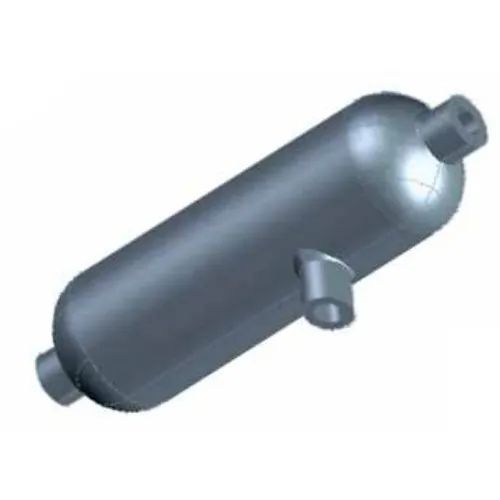Condensate Pot
What is a Condensate Pot?
The main use of condensate pot is for maximizing the accuracy of differential pressure flow measurement on steam (or vapor) applications.
A condensate pot is a type of vessel used in industrial piping systems to collect and hold condensate, which is a byproduct of the steam in the system. Condensate pots are typically made of stainless steel or other corrosion-resistant materials and are used to protect equipment and instruments from the harmful effects of condensate.
The purpose of a condensate pot is to separate the condensate from the steam and prevent it from entering equipment or instruments. The condensate pot collects the condensate and allows it to cool and condense, before releasing it slowly into the system.
Condensate pots are commonly used in industries such as petrochemicals, oil and gas, and power generation. They are often used in steam traps, control valves, and other equipment that requires protection from condensate.
How does a condensate pot work?
The theory of operation for condensate pots is that between the process taping and the pot is a steam vapor. Between the pot and the differential pressure transmitter is water (liquid) which eliminates any measurement errors due to a liquid/vapor mix at the measurement device.
Why do we use condensate pot?
It is used to condense the steam systematically upstream of the transmitter; it thus maintains a constant condensate height in the impulse lines above the differential pressure transmitter; it therefore allows an accurate measurement of the differential pressure.
Condensation is the process by which water vapor in the air is changed into liquid water; it’s the opposite of evaporation. Condensation is crucial to the water cycle because it is responsible for the formation of clouds.
Some benefits of using a condensate pot include:
- Protection of equipment: Condensate pots prevent condensate from entering equipment and instruments, which can cause damage and reduce efficiency.
- Improved performance: By removing condensate from the system, condensate pots can help to improve the performance and efficiency of the system.
- Increased lifespan: By protecting equipment from the harmful effects of condensate, condensate pots can help to increase the lifespan of equipment and reduce maintenance costs.
Condensate pots are an important component of industrial piping systems that help to protect equipment and improve system performance.
Installing a condensate pot in a piping system typically involves the following steps:
- Determine the installation location: Choose a location for the condensate pot that is downstream from the steam source and upstream from the equipment or instrument that needs to be protected from condensate.
- Prepare the piping: Cut the piping to the appropriate length and prepare the ends by removing any burrs or debris.
- Install the condensate pot: Install the condensate pot onto the piping by using appropriate fittings such as flanges or threaded connections. Make sure that the condensate pot is level and securely fastened to the piping.
- Install drain and vent connections: Install drain and vent connections on the condensate pot. The drain connection should be installed at the bottom of the pot, and the vent connection should be installed at the top.
- Connect the piping: Connect the piping from the steam source and the equipment or instrument that needs to be protected to the condensate pot using appropriate fittings.
- Test the system: Once the installation is complete, test the system for leaks and ensure that the drain and vent connections are functioning properly.
It’s important to follow the manufacturer’s instructions for specific guidance on installing the condensate pot, as different types of condensate pots may have slightly different installation procedures.
Installing a condensate pot is a relatively straightforward process that can help to protect equipment and instruments from the harmful effects of condensate in industrial piping systems.
Condensate pots are commonly used in a variety of industrial applications where steam is used as a heating or cooling medium.
Some examples of applications where condensate pots are used include:
- Steam systems: Condensate pots are commonly used in steam systems to protect equipment such as steam traps, control valves, and pressure gauges from the harmful effects of condensate.
- HVAC systems: In HVAC systems, condensate pots are used to collect and drain condensate from cooling coils and other components.
- Process industry: Condensate pots are used in process industries such as chemical processing, petrochemicals, and power generation to protect equipment such as pumps, compressors, and turbines from the effects of condensate.
- Food and beverage industry: Condensate pots are used in the food and beverage industry to protect equipment such as sterilizers, pasteurizers, and cookers from the effects of condensate.
In general, condensate pots are used in any application where condensate can accumulate and cause damage to equipment or affect system performance. By collecting and draining condensate, condensate pots help to protect equipment and maintain system efficiency.

